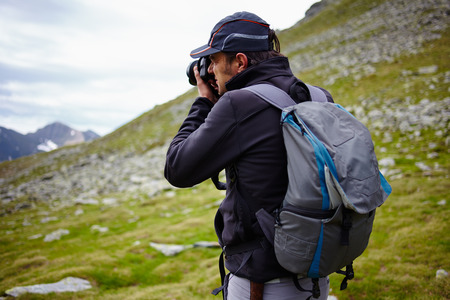Introduction to Common Hiking Injuries
Hiking is one of Americas favorite outdoor activities, offering stunning views, a great workout, and a way to disconnect from the hustle and bustle. Whether youre trekking the Appalachian Trail or exploring your local state park, its important to recognize that even the best-prepared hikers can experience injuries on the trail. Knowing what types of injuries are most common in the U.S. and understanding how they happen is the first step in preventing them—no matter if youre a beginner or an experienced backpacker.
Why Do Hiking Injuries Happen?
Most hiking injuries occur because of a mix of factors like uneven terrain, overuse, weather changes, or simple slips and falls. Many people underestimate the physical demands of hiking or overestimate their abilities, leading to preventable accidents. Even seasoned hikers sometimes take shortcuts on safety or get caught off guard by natures unpredictability.
The Most Frequent Hiking Injuries in the U.S.
| Injury Type | Description | Common Causes |
|---|---|---|
| Sprains & Strains | Damage to ligaments (sprain) or muscles/tendons (strain) | Twisting ankles on rocks, slipping on wet ground |
| Blisters | Painful fluid-filled bumps on feet | Friction from ill-fitting boots or socks |
| Cuts & Scrapes | Minor skin injuries | Falling, brushing against sharp rocks or branches |
| Knee Pain | Soreness or injury around the knee joint | Steep descents, carrying heavy backpacks |
| Dehydration & Heat Exhaustion | Lack of fluids or overheating | Hot weather, not enough water breaks |
| Sunburn | Red, painful skin from sun exposure | No sunscreen, hiking during peak sun hours |
| Bites & Stings | Irritation or allergic reaction from insects/animals | Mosquitoes, ticks, bees on the trail |
| Hypothermia | Dangerously low body temperature | Cold weather, wet clothes, wind exposure |
The Importance of Injury Awareness for All Hikers
A lot of folks think hiking injuries only happen to newbies, but thats simply not true. Being aware of these common issues helps everyone—from first-timers to thru-hikers—make smarter choices on the trail. This awareness means you can spot risks early and take steps to avoid turning a fun day outdoors into a stressful situation. By understanding what could go wrong and how it usually happens, youll be better prepared to protect yourself and your hiking buddies every time you hit the trail.
2. Sprains, Strains, and Overuse Injuries
What Are Sprains, Strains, and Overuse Injuries?
When youre out hiking, your feet and legs do most of the hard work. That’s why injuries like sprains, strains, and overuse issues are so common on the trail. These types of injuries can sneak up on both beginners and experienced hikers, especially when you’re pushing yourself or tackling rough terrain.
Common Hiking Injuries Explained
| Injury | What It Is | Common Causes | Risk Factors |
|---|---|---|---|
| Ankle Sprain | Tearing or stretching of ligaments in the ankle from rolling or twisting your foot | Uneven surfaces, stepping on rocks or roots, sudden missteps | Poor footwear, weak ankles, heavy backpacks |
| Knee Strain | Overstretching or tearing muscles/tendons around the knee | Steep descents, long downhill hikes, sudden turns or slips | Lack of leg strength, old injuries, carrying too much weight |
| Plantar Fasciitis | Inflammation of tissue on the bottom of the foot (heel pain) | Long hikes, poor arch support, walking on hard surfaces for hours | Flat feet, worn-out shoes, overweight backpacks |
| IT Band Issues | Irritation of the iliotibial band (outside of thigh/knee) | Repetitive motion, lots of up-and-down hiking, improper form | Tight leg muscles, poor conditioning, uneven trails |
Why Do Hikers Get These Injuries?
The repetitive nature of hiking—especially when you’re covering long miles or navigating rocky trails—puts extra stress on your joints and muscles. Carrying a heavy pack or wearing shoes that don’t fit right can make things worse. If you haven’t built up strength in your legs and feet before hitting the trail, you’re more likely to get hurt. Also, fatigue can set in after hours of walking, making it easier to take a wrong step or lose balance.
Key Takeaways for Hikers:
- Ankle sprains: Most likely when you step awkwardly on uneven ground.
- Knee strains: Common after steep downhills or sudden movements.
- Plantar fasciitis: Develops gradually with long-term overuse or poor support.
- IT band issues: Can flare up after repeated bending and straightening of the knee during tough hikes.
Pay attention to early warning signs like soreness or stiffness—catching problems early can keep you moving safely on the trail!

3. Blisters and Footcare Challenges
Understanding Blisters, Hot Spots, and Toenail Issues
Blisters are easily one of the most common hiking injuries, especially for beginners or anyone breaking in new boots. They usually start as hot spots—those uncomfortable, warm areas on your feet that signal friction is happening. If not addressed early, these hot spots can turn into painful blisters that make every step a struggle. Beyond blisters, hikers sometimes deal with blackened or lost toenails (often called “hiker’s toe”), which are typically caused by repetitive impact or pressure inside your boots.
The Role of Footwear Choices
Your choice of footwear can make or break your hiking experience. Ill-fitting boots, stiff new shoes, or even well-loved sneakers with worn-out soles can all contribute to foot issues on the trail. It’s important to find hiking boots or shoes that fit your feet snugly but don’t squeeze, and always try them on with the socks you plan to wear while hiking. Some hikers also benefit from switching to trail runners for lighter hikes, especially on smoother trails.
Common Causes of Foot Problems
| Foot Problem | Main Cause | Prevention Tips |
|---|---|---|
| Blisters | Friction from ill-fitting footwear or wet socks | Break in boots, use moisture-wicking socks, apply blister tape at first sign of a hot spot |
| Hot Spots | Early stage of blister formation due to rubbing | Stop and treat immediately with moleskin or tape before continuing |
| Black Toenails (“Hiker’s Toe”) | Repeated impact against the front of the boot on descents | Ensure enough room in toe box, trim toenails short before hiking, lace boots properly for downhill sections |
The Impact of Trail Conditions
Trail conditions can also play a big role in foot health. Wet or muddy trails may soak your shoes and socks, increasing the risk of blisters. Steep descents put extra pressure on toes and nails, while rocky paths can create unexpected friction points. Always consider packing an extra pair of dry socks and be ready to adjust your lacing if you hit tough terrain.
Quick Tips for Happy Feet on the Trail:
- Choose the right footwear for your hike and break them in ahead of time.
- Keep your feet dry—change socks if they get wet.
- Packing blister pads, moleskin, or athletic tape is a smart move.
- Lace up properly to avoid sliding feet inside your boots.
- Treat any discomfort right away before it turns into a bigger issue.
4. Environmental Hazards: Sunburn, Dehydration, and Heat-Related Illness
Identifying Common Environmental Risks on American Trails
When hiking in the U.S., especially during spring and summer, environmental hazards like sunburn, dehydration, and heat-related illnesses are common. These risks can sneak up on even experienced hikers, particularly in areas like the Southwest deserts, high-altitude Rockies, or open sections of the Appalachian Trail.
Sunburn: More Than Just a Red Face
American trails often have long stretches without shade. Sunburn is not just uncomfortable—it can lead to serious skin damage and increase your risk for skin cancer over time. UV rays are stronger at higher elevations and can still burn your skin even on cloudy days.
How to Prevent Sunburn:
- Wear broad-spectrum sunscreen (SPF 30 or higher) and reapply every two hours.
- Cover up with lightweight, long-sleeved shirts, pants, and a wide-brimmed hat.
- Use UV-blocking sunglasses to protect your eyes.
Dehydration: A Silent Threat
Many American hiking spots—like Utah’s national parks or California’s backcountry—can be hot and dry. Dehydration happens when you lose more fluids than you take in. Even mild dehydration can cause headaches, dizziness, and fatigue, making it harder to finish your hike safely.
Signs of Dehydration:
| Warning Signs | Description |
|---|---|
| Dry mouth/thirst | Your body’s first sign it needs water |
| Dark yellow urine | A sign you’re not drinking enough |
| Dizziness/lightheadedness | You may feel weak or unsteady |
| Fatigue | Lack of energy can slow you down |
How to Stay Hydrated:
- Drink water regularly—even if you don’t feel thirsty.
- Pace yourself; take breaks in the shade whenever possible.
- If hiking long distances or in high heat, consider electrolyte drinks or snacks.
- Plan ahead: Know where water sources are located or carry enough for the whole hike.
Heat-Related Illnesses: Know the Difference
High temperatures can lead to more serious problems like heat exhaustion or heat stroke. These conditions are medical emergencies if ignored. They happen when your body overheats and can’t cool down quickly enough.
| Condition | Main Symptoms | What to Do |
|---|---|---|
| Heat Exhaustion | Heavy sweating, weakness, nausea, headache, muscle cramps | Move to shade, drink water, rest, cool down with wet cloths |
| Heat Stroke | No sweating, confusion, rapid pulse, fainting, very high body temp | Call 911 immediately! Move to shade and try to cool person until help arrives |
Tips for Preventing Heat-Related Illnesses:
- Avoid hiking during peak afternoon heat (10 AM–4 PM).
- Dress in light-colored, moisture-wicking clothes.
- Pace yourself and listen to your body—don’t push through warning signs.
- If possible, hike with a buddy so you can watch out for each other.
The Bottom Line for Safe Hiking in Hot Weather:
The key is preparation. Check the weather before heading out, pack plenty of water and sun protection gear, and always know your limits. Staying alert to environmental hazards will help ensure your adventure stays safe and fun!
5. Tips for Prevention and Trail Safety
Smart Steps to Prevent Hiking Injuries
Staying safe on the trail starts before you even lace up your boots. In the U.S., hikers take a “safety first” approach, planning ahead and using common sense to avoid injuries. Here are some practical tips that every hiker should know:
| Tip | Why It Matters | How to Do It |
|---|---|---|
| Wear Proper Footwear | Reduces blisters, sprains, and falls | Choose sturdy hiking boots or shoes with good traction and ankle support |
| Pace Yourself | Prevents overexertion and heat-related issues | Start slow, take breaks, and listen to your body—especially in U.S. national parks where trails can be long and steep |
| Stay Hydrated | Avoids dehydration and cramps | Carry plenty of water; use hydration packs popular among American hikers |
| Pack Essential Gear | Keeps you prepared for surprises on the trail | Bring a map, first aid kit, snacks, headlamp, rain gear, and a whistle (the 10 Essentials is a common U.S. checklist) |
| Check the Weather | Avoids getting caught in storms or extreme heat/cold | Look up the forecast before heading out and be ready to turn back if conditions worsen |
| Tell Someone Your Plan | Makes sure help can find you if needed | Share your route and expected return time with a friend or family member—standard practice on U.S. trails |
| Follow Trail Etiquette & Rules | Keeps everyone safe and protects nature | Stay on marked trails, yield to uphill hikers, pack out trash (“Leave No Trace” is a big deal in the U.S.) |
First Aid Basics Every Hiker Should Know
No one plans to get hurt, but knowing what to do makes a big difference. Here’s what’s considered essential knowledge for hikers in America:
- Treat Blisters Early: Stop as soon as you feel rubbing; cover hot spots with moleskin or bandages.
- Manage Sprains: Rest the injured part, apply ice if possible, compress with an elastic bandage, and elevate it.
- Cuts and Scrapes: Clean wounds with water, apply antibiotic ointment from your kit, cover with a sterile bandage.
- Avoid Heat Exhaustion: Move to shade, sip water, loosen tight clothing, use cool cloths if available.
- If You Get Lost: Stay calm; stay put if possible. Blow your whistle (three blasts means help), make yourself visible to searchers.
Safe Hiking Practices for an Amazing Experience
- Hike With a Buddy: Solo hiking is popular but going with friends is safer—plus it’s more fun!
- Know Your Limits: Choose trails that match your fitness level. The U.S. has everything from easy walks to challenging backcountry routes.
- Avoid Wildlife Encounters: Make noise as you hike to alert animals, keep food sealed up, never approach wildlife (especially bears or snakes).
- Respect Trail Signs: They’re there for your safety—follow posted warnings about cliffs, unstable ground, or closures.
- Pace Your Adventure: Take time to enjoy the scenery! Rushing leads to accidents; most American hikers value the journey as much as the destination.
Your Trail Safety Checklist Before You Go:
- Packed enough water?
- Told someone your plan?
- Brought a first aid kit?
- Dressed for the weather?
- Checked the latest trail info?
The Bottom Line: Be Prepared and Enjoy Your Hike!
The best way to prevent injuries is by planning ahead and making smart choices along the way. With these prevention tips rooted in American hiking culture, you’ll set yourself up for a safe—and unforgettable—outdoor adventure.


